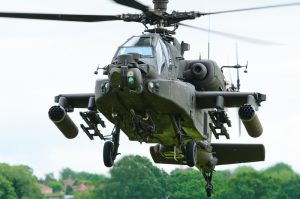Standing on the precipice of transformative change, the US Army is plunging into an extensive modernization effort to secure its position in the evolving warfare landscape. Embarking on a bold strategy, the Army isn’t merely trimming fat but is reallocating resources in a tactical bid to dominate future combat landscapes. In an audacious leap towards future conflicts, the Army is transitioning from focusing on counterinsurgency efforts to preparing for major warfare by revamping its structure and priorities.
This transformation isn’t just numbers on paper. This overhaul is about shifting 24,000 roles and integrating advanced skills in aerial protection and UAV interception, marking a profound evolution in the Army’s operational framework. Delving into the intricacies of military adaptation, this discourse unveils essential insights for those intrigued by strategic evolution or pondering the Army’s response to emerging challenges.

Army Recruiting Jobs Table of Contents:
- Understanding the US Army’s Major Force Restructuring
- The Vision for a Modernized Army
- Balancing Force Structure with End Strength
- Enhancing Air Defense and Counter-Drone Capabilities
- Preparing for Large-Scale Combat Operations
- Conclusion
Understanding the US Army’s Major Force Restructuring
In a daring stride, the US Army is set to trim down and redistribute positions, putting almost five percent of its troops on the chopping block. This decision marks a significant pivot towards preparing for future warfare.
The Shift from Counterinsurgency to Future Warfare
Over 10,000 jobs tied directly to counterinsurgency missions in Iraq and Afghanistan have been shown the door in recent years. The reasoning? A strategic shift is focusing on readiness for large-scale combat operations rather than prolonged guerrilla fights.
This shift highlights a realization that our threats have morphed, necessitating an adjustment in our military’s approach.
Phasing Out Training Foreign Forces
About 10,000 positions dedicated to training foreign forces are also getting axed. It appears this move aligns with a broader strategy to consolidate resources toward enhancing direct combat capabilities.
The reduction reflects that these efforts may be better served through other means or partnerships.
The Vision for a Modernized Army
Imagine the US Army as a tech-savvy teenager eager to upgrade its old gadgets. The Army is zealously advancing towards futuristic battle configurations in their quest for modernization. In their quest to streamline, they’re phasing out the surplus and honing in on brigades capable of managing grand-scale conflicts.
This strategic shift is not just about adding new toys but ensuring each unit has capabilities like never before. It’s like when you’re gaming, and you level up, gaining access to more powerful gear and abilities needed to tackle the more significant battles that lie in wait.
Balancing Force Structure with End Strength
The US Army’s balancing act is like a tightrope walker trying to reach the other side. It stands at 445,000 troops strong but aims to bulk up to 470,000 by 2029. It’s not merely a numbers game; the strategy is to thoughtfully increase troop levels in harmony with strategic objectives, ensuring each addition contributes meaningfully towards overarching strength ambitions.
To sculpt a more efficient and potent military body, the Army strategically cuts back and redistributes its assets to brace for upcoming adversities. This restructuring is crucial for maintaining readiness without bloating the ranks unnecessarily.
To dive deeper into how these changes take shape and impact operational readiness, check out the official US Army website.
Enhancing Air Defense and Counter-Drone Capabilities
Creation of Indirect Fire Protection Capability Battalions
In a notable pivot to counter contemporary menaces, the military has committed to bolstering its ranks with an additional 7,500 positions dedicated to aerial safeguard and drone opposition squads. Creating four Indirect Fire Protection Capability battalions among these new roles stands out as a game-changer in drone defense capabilities.
It’s not merely expanding the roster; it reflects a strategic pivot towards mastering the dynamic combat landscape, where drones have emerged as pivotal players. Enhancing our defenses against unmanned threats, we’re fortifying our stance with advanced indirect fire measures.
Introduction of M-SHORAD Battalions
In parallel with indirect fire battalions, introducing four M-SHORAD (Maneuver Short Range Air Defense) battalions reflects how seriously the army takes its air and missile defense mission. Crafted for swift action against skyborne dangers, these units adeptly navigate the battlefield’s flux.
M-SHORAD units, stepping in to shield moving troops from low-flying threats, are indispensable in the intricate battlefields of our time.
Preparing for Large-Scale Combat Operations
The US Army is laser-focused on gearing up for the big leagues of warfare. We’re diving into the deep end with grand-scale battles that necessitate evolved tactics and augmented strength, far beyond mere hit-and-run fights or insurgent maneuvers.
The Army’s restructuring initiative zeroes in on sculpting new formations brimming with cutting-edge tech and firepower to stay ahead of the curve. Imagine battalions specializing in air defense and drone swatting – these are not your granddad’s infantry units. They’re leaner, meaner, and ready to take on whatever comes their way.
Adapting our strategy means we stay agile and tough, ready to face any challenge head-on. It’s a bold move towards maintaining global peace through unmatched military readiness.
Conclusion
The restructuring of the US Army force marks a pivotal shift towards future combat readiness. This overhaul aims to streamline the military, focusing on modern warfare needs.
Significant changes entail redistributing 24,000 roles and a heightened focus on aerial defense mechanisms and drone countermeasures. In adapting to the evolving conflict landscape, these adjustments gear up for expansive maneuvers while adeptly confronting novel dangers.
The Army is adapting with agility by trimming roles tied to past conflicts and investing in new battalions. It’s about ensuring operational flexibility and enhancing strategic defenses.
This transformation isn’t just reshaping; it’s about fortifying for tomorrow’s challenges. With these changes, readiness takes precedence, setting a robust foundation for what lies ahead.
Want more military info? Find your nearest military recruiter here!
